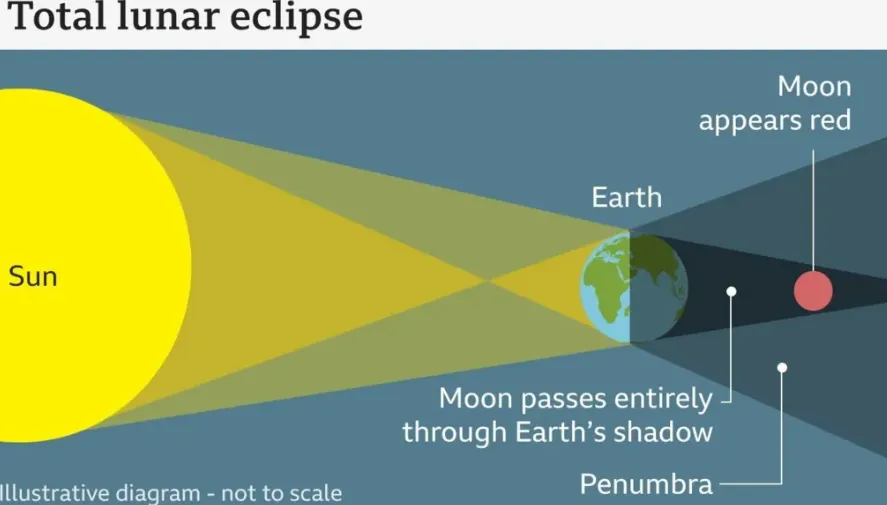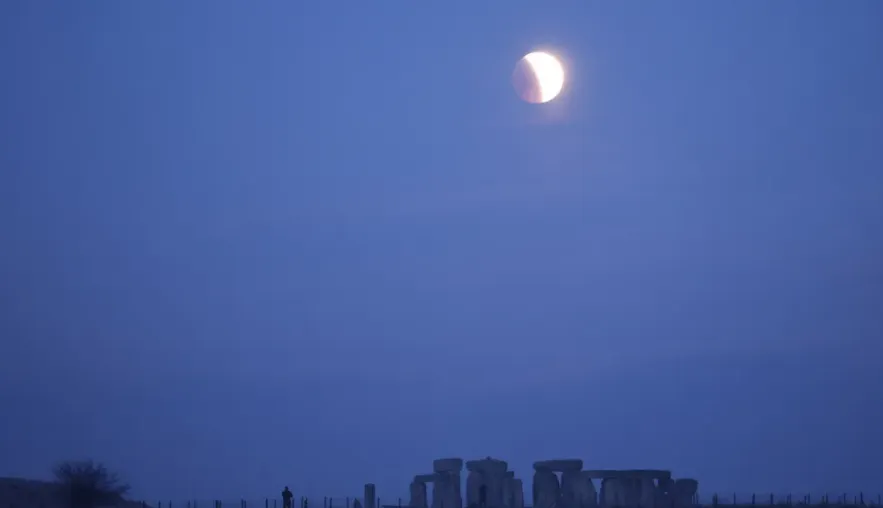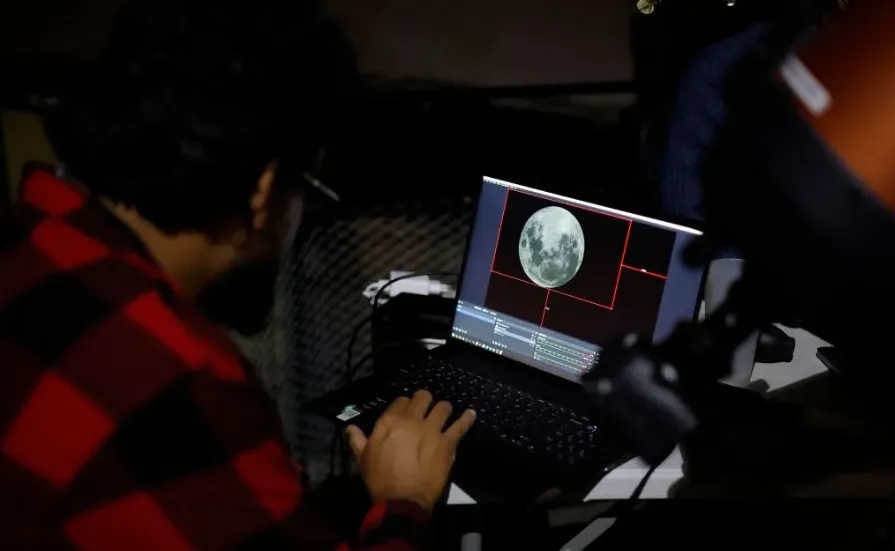Tonight, the Moon isn’t just our silvery celestial companion—it’s putting on a colorful show. If you’re gazing up in 2025Blood Moon and spotting hues of crimson, tangerine, or gold, here’s the science (and spectacle) behind it.
The Cosmic Ballet: Lunar Eclipse Magic
The most dramatic reason for a red-hued Moon is atotal lunar eclipse. OnMarch 14, 2025, skywatchers across the Americas, Europe, Africa, and parts of Asia will witness this event. The complete Moon sets into Earth’s shadow and shines with coppery-red light instead of disappearing. The “Blood Moon” view occurs because Earth’s atmosphere spreads sunlight which bends red wavelengths toward the Moon while refracting other colors around Earth. Atmospheric dust from natural and human-caused events determines the precise color variations between deep burgundy, burnt orange, and golden yellow. The amount of atmospheric cleanliness determines orange brightness as air pollution produces darker red colors.
Another eclipse onSeptember 7, 2025, visible in the Pacific, Americas, and East Asia, offers a second chance to catch this phenomenon. Mark your calendars!

The Horizon Effect: Nature’s Filter
The Moon shows shades of color without any eclipse occurring. Earth’s atmosphere distorts the moonlight when the moon crosses the horizon because it passes through greater atmospheric layers. The higher blue wavelengths of sunlight scatter into space thus the sky appears blue while low light wavelengths of red, orange and yellow remain and create the colorful Moon color spectrum. As the Moon elevates in the sky it progressively becomes white in color while you can observe this transformation throughout the night.
You should monitor the lunar phases in 2025 under two conditions: observe the Full Moon when it is positioned near the horizon line during sunset or sunrise to see the color transition. During the October Hunter’s Moon it appears as a blazing orange object at moonrise then turns into a glistening yellow light.
Atmospheric Drama: Pollution, Fires, and Volcanoes
Human activity and natural events also tint the Moon. Wildfire smoke or urban pollution can amplify reddish tones by adding particles to the air. If a major volcanic eruption occurs before 2025 (think Mount Pinatubo in 1991), its ash could linger in the stratosphere, deepening the Moon’s rust-colored hues during eclipses or horizon views.
The 2025 Eclipse: Key Details
- Date & Duration:Totality began at 04:26 UTC and lasted approximately 65 minutes, with the entire eclipse spanning over five hours.
- Visibility:The eclipse was best viewed from the Americas, Western Europe, and Africa. Observers in the eastern U.S. and South America enjoyed front-row seats under clear skies, while parts of Asia caught partial phases.

How to Enjoy the Show
- Timing is Key: For eclipses, check local visibility maps. For horizon color, note moonrise/moonset times (apps like SkySafari help).
- Location Matters: Escape light pollution. Rural areas offer clearer skies and richer colors.
- Photography Tips: Use a tripod and manual settings. Adjust exposure to capture subtle hues without overbrightening.
Photographing the Eclipse: Tips for Future Events
For aspiring astrophotographers, capturing a blood moon requires preparation:
- Gear Up:Use a DSLR with a telephoto lens (200mm+) and a sturdy tripod.
- Settings:Start with ISO 800, f/8 aperture, and 1-2 second exposures; adjust as needed.
- Smartphone Tricks:Use night mode and a tripod adapter. Apps like NightCap can enhance results

Looking Ahead: Future Eclipses
Mark your calendars for March 3, 2026, when the next total lunar eclipse will grace skies over Asia, Australia, and the Americas. While lunar eclipses are not rare (occurring 2-3 times yearly), each offers a unique spectacle based on atmospheric conditions and geography.More
Conclusion: A Celestial Canvas
The Moon currently shining in the night sky functions as a celestial narrator. Colors on the Moon surface disclose information about Earth’s atmosphere in addition to celestial alignments and environmental conditions. Both Blood Moon’s eerie illumination and harvest Moonrise’s tender glow enable us to sense universal patterns.
View the night sky from your outdoor location to let the Moon’s beautiful shades create your inspiration. High in the stars of 2025 the sky demonstrates dramatic artistry and sublime beauty making clear that illuminating compositions can surpass all other artistic creations.click here


